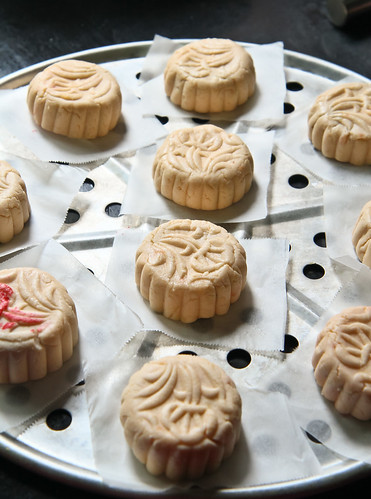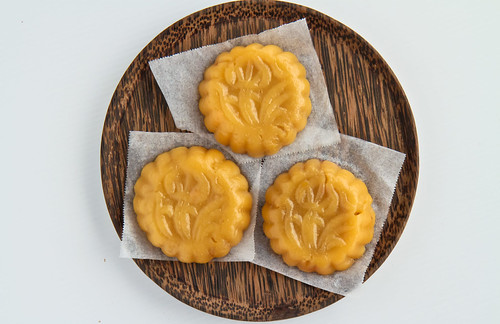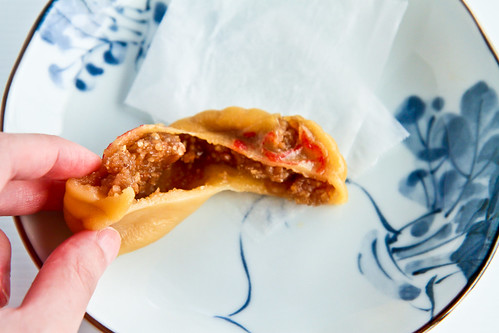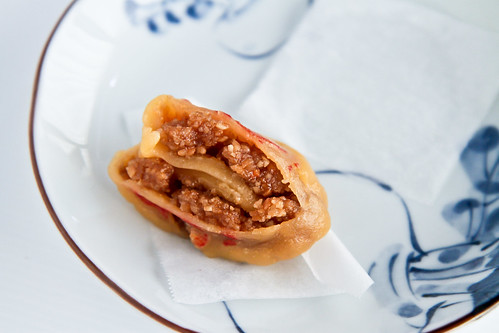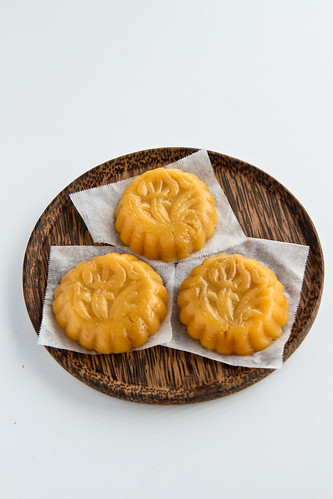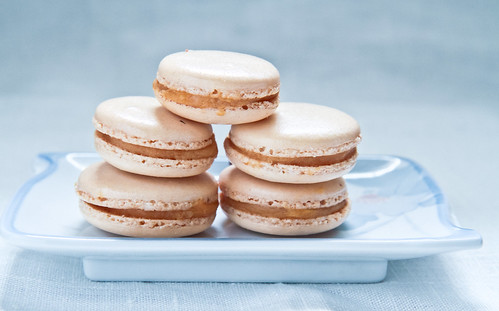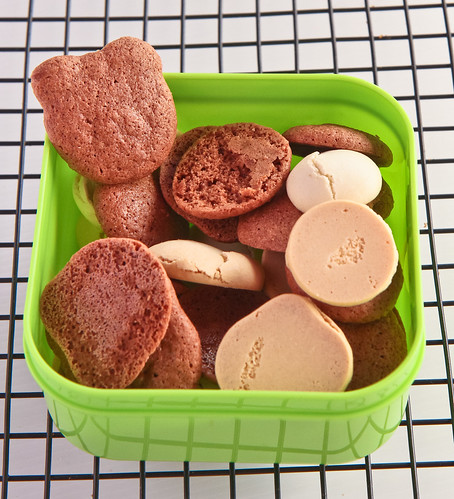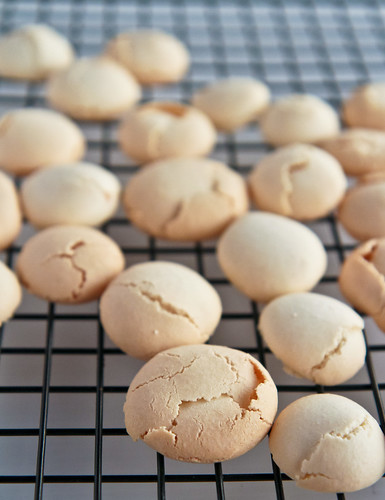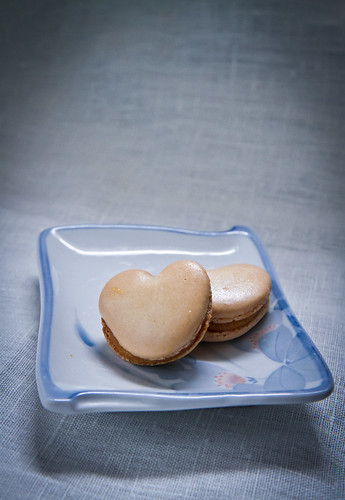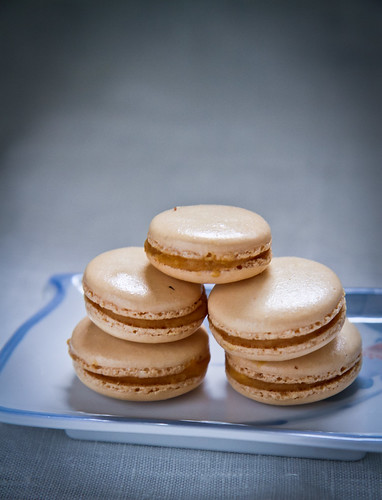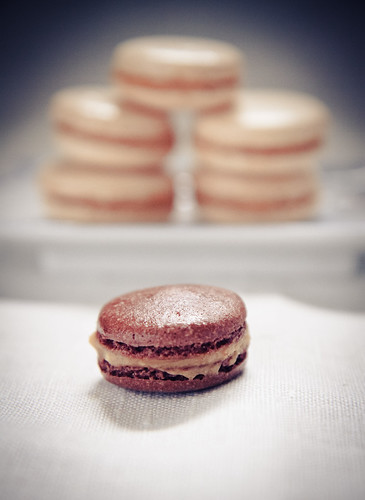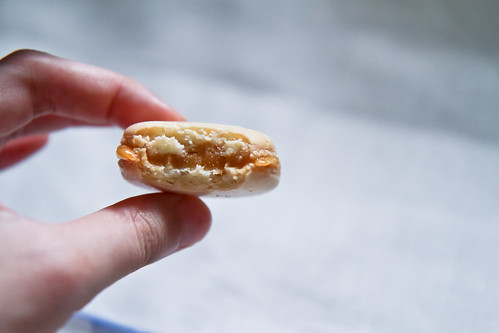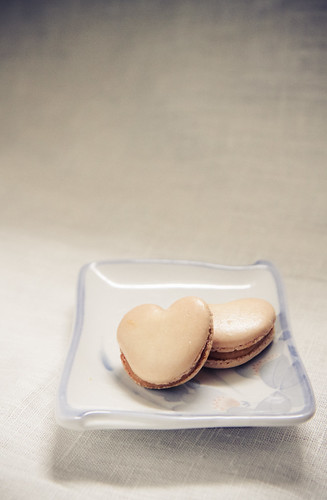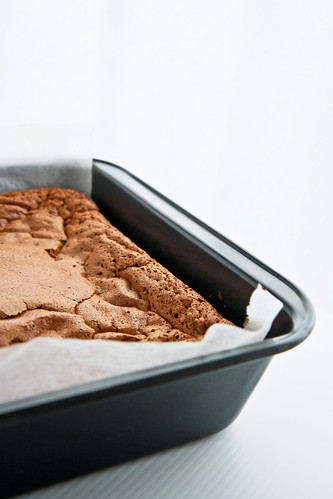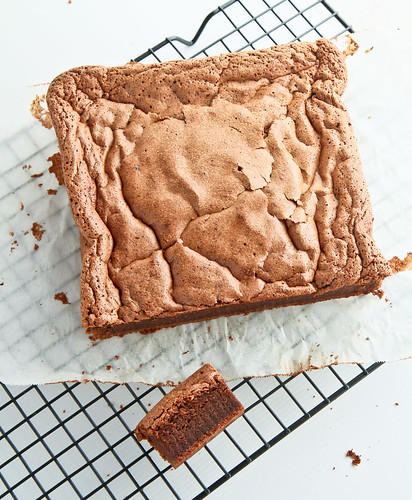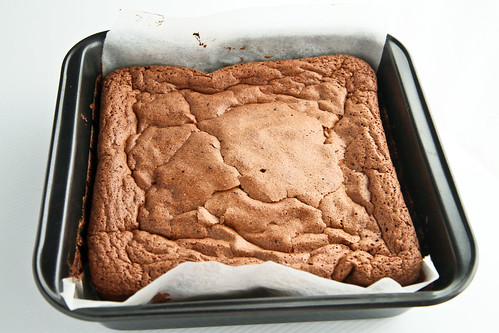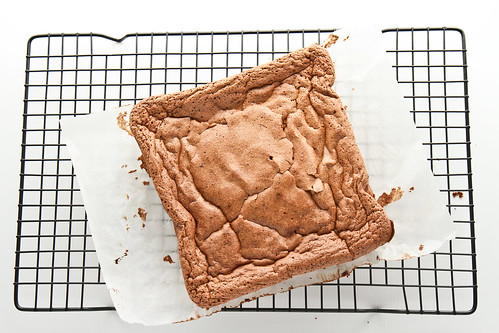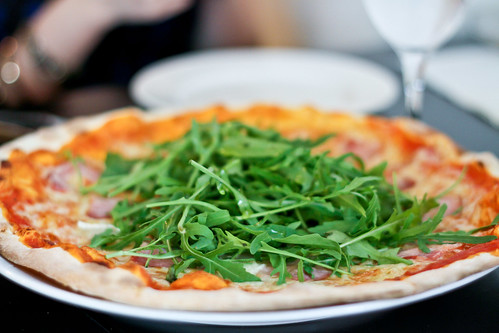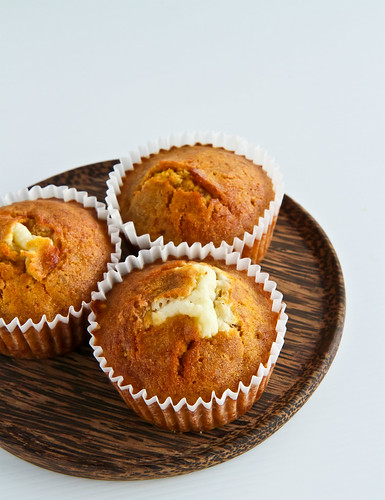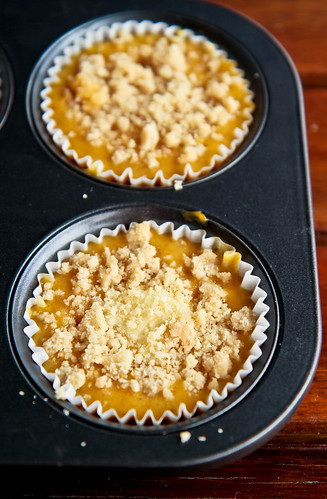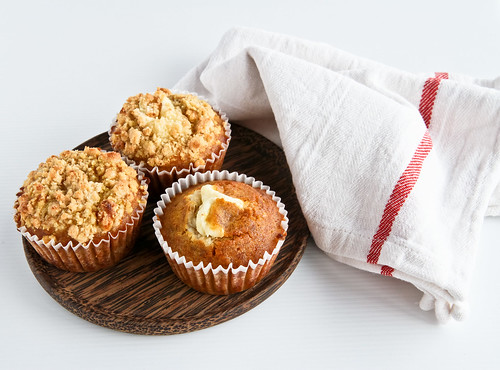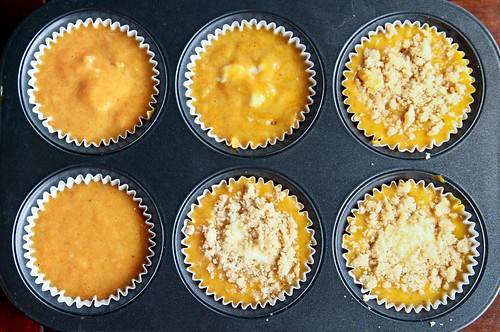When I first posted THIS
list of baking supplies stores in Singapore, I never imagined that it would be one of the most popular posts on this blog. I'm happy that it is, because it means that my list is of use to other people who may be on the search of certain baking products/goods/ingredients in certain places. Do check out the
updated list - I've updated it with some additional places, as well as included the opening hours of all the places.
Just a tiny grouse - I've seen some similar lists on other blogs (who I shall not name) who have posted similar lists - while I understand that there are only that many places in Singapore selling baking ingredients, and that such information is easily available on the www, time and effort was spent to collate the list, so it would be highly appreciated if credit is given where it is due.
Okay, gripes aside, I thought that the list should be supplemented with additional information which I personally find helpful - mainly price comparisons for a few common ingredients. As I've said before - I'm a very 'cheapo' person - I like to think of myself as thrifty though. I like to survey prices and I like to think about buying something for some time before actually buying (though I give in to impulse buys more often than not). I have this tiny note in my phone which records the prices of certain ingredients in certain places, so that I know how much it is and if it really is on promotion (some stores have this gimmick of putting an item on offer when really it is the same price :/ ).
So for this list, I decided to use ingredients that I usually purchase, which actually are ingredients that most recipes will require - butter, other dairy products, cocoa powder and chocolate. Flour, sugar and eggs are the other typical contenders, but since these are largely the same everywhere, I've left them out. I've also included almonds and baking mats in the comparison below, just for fun and because I thought it might be useful to others as well. I still remember back when I first started baking (late last year), I spent so much time visiting each and every shop, surveying prices and jotting them down in my phone. These prices are updated as of October 2011, and should be the prices you'll see when you visit the stores yourself.
These are the lucky seven ingredients I've decided to start with, but I'll probably list more as time goes on. I already have a number of other information in mind to post and share with you guys.
Again, please note that I am not paid by any of the shops below to do any (secret/stealth) promotion or advertisement, and these prices are the result of an extensive market survey conducted over months after my numerous visits to these places to hunt for the best prices and ingredients.
Valrhona chocolate
Some might wonder, what on earth is this Valrhona which bloggers rave about now and then? Well, it actually used to be a small chocolate producing company in the Lyon area of France, but since then, they have grown to become one of the leading producers of chocolate in the world. Renowned pastry chefs and chocolatiers from around the world use Valrhona (which is the result of pretty good marketing in my opinion) and they also sponsor many chocolate competitions around the world.
I especially remember an episode of Adriano Zumbo's short documentary where he says that he went to the factory in France to specially make his own chocolate [ETA: it appears that I must have remembered wrongly, because I read that he is loyal to Cacao Barry.] (by that he means choosing where the chocolate comes from as well as the % of chocolate and type of bean). For those still in the dark, chocolate, like vanilla pods, is highly affected by where it is being grown - so a Criollo cocoa bean grown in Tanzania compared with another grown in Madagascar might produce chocolate with different 'notes' and aromatics. How cool huh! This is especially evident if you taste-test the chocolate all at the same time. I did it with a few chocolates and oh my, in some chocolates you can even taste honey! My pastry god, Pierre Herme also swears by Valrhona of course :p
The next question that comes to mind now is, where can I get this widely raved about chocolate? Well, I believe the below is a comprehensive list of shops which sell Valrhona in Singapore.
Prices for Valrhona cocoa powder:
- BIY - $39.80 for 1kg (no smaller quantities)
- Kitchen Capers - $4.20 for 80g, $34 for 1kg
- Shermay's Cooking School - $9.95 for 200g, $18.90 for 400g (but they frequently have 20% off)
- Sun Lik - $8.50 for 250g, $16 for 500g
- ToTT (under Euraco Fine Foods Store) - $90 for 3kg (no smaller quantities)
Please note that I'm not paid by any of the stores I've listed above (I wish!), but as you can see, Sun Lik sells Valrhona cocoa powder for the cheapest if you are buying in small quantities. So now you know where to get your Valrhona fix in Singapore! This is of course, subject to many other factors, like where on the island you live and how convenient it is for you to get to these places. Only Kitchen Capers is located in the East, BIY and ToTT are both located along Bukit Timah (but at least a 10 minute car-ride apart), Shermay is in Chip Bee Gardens, which is opposite Holland Village, and Sun Lik is opposite Raffles hotel, near Bras Brasah. Btw, nowhere in Johor is it being sold (trust me I've checked).
When reading recipes, you might also encounter the phrase "dutch-processed cocoa powder" and wonder what in the world is it? Well,
David Lebovitz has a really good FAQ - simply put, dutch-processed cocoa powder is less acidic. It is also known as an alkalized unsweetened cocoa powder, and since it's neutral, you'll need to use it alongside baking powder. Brands of natural cocoa powder include Nestle and Hershey's, Ghirardelli, and most other American brands of cocoa powder. Most European cocoa powders are Dutch-processed, so Valrhona and the rest I've listed below are usually Dutch-processed. Just keep a lookout for the words "natural" on the packaging - if it is natural, it's not dutch-processed, and vice-versa.
Joy of Cooking provides a substitution between dutch-processed and natural cocoa but I haven't tried it out myself.
The below list is an
almost comprehensive list of the types of cocoa powder available in Singapore. You will notice that like Valrhona, the Belgian cocoa powders cost quite a bit too - remember: you get what you pay for!
Other types of cocoa powder available in Singapore
- Brandless cocoa powder (from Malaysia)
- Phoon Huat - $4.10 for 250g
- Sun Lik - $1.50 for 100g, $5.50 for 500g, $10.50 for 1kg
- Van Houten cocoa powder
- Mustafa - $7 for 250g
- Sun Lik - $3.60 for 125g, $6.50 for 250g, $10.50 for 1kg
- NTUC/Cold Storage - $5.75 for 250g
- (for comparison) in any Jusco supermarket in JB - RM7.50 for 125g, RM13.50 for 250g
- Hershey's Cocoa Powder (226g carton)
- Kitchen Capers - $6.85
- Mustafa - $5.90
- NTUC - $6.62
- Cold Storage - $8.60
- Sun Lik - $7.30
- (for comparison) in any Jusco supermarket in JB - RM16.90 for 125g
- Cacao Barry
- This is a Belgian chocolate which similarly has a wide range of chocolate and cocoa products. I first encountered them in Belgium with their cocoa nibs and they're good!
- Kitchen Capers - $3.50 for 80g or $25 for 1kg
- Delicia - $20 for a 1kg pack
- (for comparison) in Perling Indah in JB - RM58 for 1kg
- Belcolade
- CocoaOrient - $37.50 for a 3kg pack of Premium Dutch Cocoa Powder (but you must buy a carton which contains 2 3kg packs - i.e., $75 for 6kg)
- Nestle
- Not available in Singapore, but I bought a can in Australia for about A$4 - it tastes better than Hershey's in my opinion but not as complex as Valrhona!
***
Bittersweet chocolate (70%) As I have alluded to earlier, not only are there different brands of chocolate available in the market, these chocolates have varying percentages of cocoa solids as well. Basically, the chocolate bars you see are actually a combination of cocoa beans, cocoa butter and sugar (mainly). So the percentages you see refer to the amount/percentage of cocoa solid (beans) within that block of chocolate.
For the purposes of price comparison, I have decided on the 70% chocolate, which I often buy because of its bittersweet qualities. I find it the most value for money, because if you want a bittersweet chocolate, you can just use the chocolate by itself, but should you want a semi-sweet type of chocolate, you can combine this with a chocolate with a lower percentage (say 40% or even a milk chocolate) and you'll get a semi-sweet combination easily.
The 70% chocolate (Guanaja) is available at
- BIY - $27 for 500g (only 1 size)
- Kitchen Capers - $40 per 1kg block, $106 for 3kg.
- Sun Lik - $14 for 300g (couvertures), $40 for the 1kg block
- ToTT - $114 for 3kg (only 1 size)
- Shermay's - $12.95 for 250g, $24.90 for 500g
Cacao Barry also has a 65% Madagascar chocolate, which Kitchen Capers sells at $8.30 for 200g and the 76% Equateur Chocolate which retails at $33.80 per kg. Another place that sells Cacao Barry is
Delicia, an online retailer which I found through googling. They sell the 76% Equateur for $26, which is substantially cheaper than KC, but note that you have to pay for delivery charges (not sure how much though?) unless you have a minimum order of $160. Sun Lik has the 70% Cacao Barry at $8 for 250g pack and $29.80 for the 1kg original pack.
Callebaut has a 70.4% dark bittersweet chocolate, which retails at Sun Lik at $7 for a 250g packet.
ToTT also sells another brand, Belcolade, another type of Belgian chocolate which they sell for $25.20 for a 1kg pack. The cocoa content for the bitter chocolate is 71%. If you want this same brand for cheaper, you can head down to Admiralty, to
CocoaOrient, which sells it for $17.50 for the same 1kg pack. They are a wholesaler, but I called to ask if they sell to walk-in customers and they do :] Just email them in advance to let them know your order before self-collecting! They open from 0830-1800hrs. Again, Sun Lik also sells Belcolade, for $23.50 per kg.
The cheapest bittersweet chocolate will be the Strong Bitter Couverture droplets by Bakeway - sold in Phoon Huat. They have a 73.5% cocoa content, and only costs $14.20 for 1kg. I personally have not tried this, but when I was in the Chip Bee Gardens and Bencoolen branch, I saw many people loading up on the chocolate when it came in stock.
Btw, if you are desperate, you can also use those confectionary chocolates - for e.g., NTUC has the Cadbury Old Gold block chocolate, which has 70% cocoa content. They also sell Lindt block chocolates with the same cocoa content. For couvertures, Cold Storage, NTUC and other supermarkets also sell this brand called "Choco Line" which has a 53% dark couverture at $4.90 for 150g. Again, they work well when you're desperate or when you're baking to satisfy a craving at say, 11pm and you run out of chocolate and there's a 24h NTUC near you :]
***
I never knew the importance of using good quality butter until I tried it myself. I have come to realize that it isn't that much more expensive. I don't always use French Butter, because it's quite expensive to use on a daily basis, but I substitute it for unsalted butter by the brand of Saputo, which retails at Phoon Huat for $4.80 per 454g.
Other brands of butter that are available include (I've listed the more common brands towards the bottom of the list):
- Elle & Vire
- $3.20 for a 200g block (Sun Lik)
- $3.50 for 200g block (ToTT)
- $4.32 per block for a pack of 3 250g blocks (Shermay)
- $3.49 per block for a pack of 6 (Shermay)
- Saputo
- $1.90 per 200g block (Phoon Huat)
- $4.10 per 454g block
- Greenfields
- $2.40 for 250g (Phoon Huat)
- Goldtree
- $2.40 for 250g block (Phoon Huat)
- President salted/unsalted butter
- $4.50 for 250g (Delicia)
- $5.45 for 250g (Cold Storage)
- $5.40 for 250g (Shop & Save)
- Lurpak salted/unsalted butter
- Anchor salted/unsalted butter
- Golden Churn salted butter
- $4.70 per 250g block (Cold Storage)
- $4.50 (Sun Lik)
- $4.55 (NTUC/Shop & Save)
- SCS unsalted butter
- $5.30 per 250g block (Cold Storage)
- $3.50 per 250g block (Sun Lik)
- $4.75 per 250g block (NTUC)
- $5.15 per 250g block (Shop & Save)
- SCS salted butter
- $2.85 per 125g block (Cold Storage)
- $2.80 per 125g block (Shop & Save)
- Fairprice Pure Creamery butter
- $3.50 per 250g block (but NTUC usually has offers for this)
- Cowhead
- $3.80 for 250g block (NTUC)
- $3.25 for 250g block (Shop & Save)
- Liv unsalted butter
- $4.50 for 250g block (Shop & Save)
- Tinned Golden Churn Butter (no need to refrigerate)
- $8.60 for 454g (found in the baking needs section)
Btw, if you are confused about all the various brands available, you can check out a
butter taste test conducted by Weylin 2 years ago in 2009. Although I have not conducted a similar taste test, I have used most of the brands I've stated above, and like I've mentioned, if your pocket can take it, do use the Normandy French butters (Elle & Vire) because you'll get the best buttery, creamy flavor from it. If the places which sell it is not accessible, Lurpak is an often used alternative - it's a Danish butter, but the results are good. SCS is also a common brand used by many, especially in Malaysia (or rather, JB where I stay in) which might not have a similar wide range of expensive butters.
My mom used to buy Buttercup because it was cheap, but note that this isn't exactly real butter - the reason why it's so cheap is because it's a mixture of oils - it is actually termed as "dairy spread" and costs $2.25. There is a cheaper brand called Goldenmaid that retails for $1.90. The ingredients usually include butter flavor and vegetable oils.
***
Cream is also an essential ingredient if you want to make a ganache or certain types of icing or butter creams. I love the ones at Phoon Huat, because I think they're thick and cheap.
Beware of different types of cream - there's the non-dairy type, which typically retails for cheaper and the dairy type of creams. I prefer the dairy types, because it's just hard to replicate that creaminess that comes from cows.
The supermarkets also sell this Nestle sterilized cream, which retails at $2.15 for a 170g tin, which works perfectly fine when you need cream urgently. This is the only cream that retails in almost every supermarket, even the tiny small NTUC near my house. I've used the cream in my caramel making and it tastes almost as good as those made with fresh cream.
Just a tip, you can freeze cream, especially the non-dairy ones - what I do is to freeze them in ice cube trays so that I can pop them out when I need them, so don't worry about buying huge cartons of cream because they can last pretty long! Do note that if you refrigerate it, once you open the carton, it has to be used within 2 weeks or it will start souring and smelling! Also, the dairy whipping cream, once frozen, tend to look curdled and will be quite difficult to whip up into soft/hard peaks, so I'd suggest using them in ganaches etc where you melt them. Non-dairy whipping creams don't have such a problem though! The visible difference between the both is probably first the color - dairy whipping creams tend to be off-white or cream in color whereas non-dairy creams are pure white. Also, dairy whipping creams taste, naturally, like milk (more dairy) whereas non-dairy doesn't have that 'cow' taste and tastes sweetener. Nevertheless, if you are lactose-intolerant, non-dairy is the way to go!
Types and prices of cream:
- Elle & Vire (35.1%)
- $9.50 for 989g (ToTT)
- $8 for 989ml (Sun Lik)
- $9.95 for 989ml (Shermay)
- President Dairy Whipping Cream (35.1%)
- $8 for 1000ml (Sun Lik)
- $8.80 for 1000ml at Kitchen Capers
- $11.80 for 1000ml at Cold Storage (although the packaging looks different)
- $11.75 for 1000ml at Shop & Save
- $4.55 for 200ml at Cold Storage (the UHT whipping cream, light cream and extra light all retail at the same price)
- Dairy Farmer Thickened Cream
- $3.80 for 300ml at Kitchen Capers
- $3.75 for 300ml at Cold Storage
- $3.65 for 300ml at NTUC
- $3.55 for 300ml at Mustafa
- Bulla Fresh Thickened Cream (35.1% fat)
- $4.10 for 300ml at Cold Storage
- $4.05 at NTUC
- Bulla Fresh Pure Cream (45% fat)
- $4.30 for 200ml at Cold Storage
- Emborg Whipping Cream (38%)
- $3.35 for 200ml at Mustafa
- $3.40 for 200ml at NTUC/Cold Storage
- Millac Dairy Whipping Cream
- Greenfields Whipping Cream
- $10.05 for 1000ml at Cold Storage
- Lescure UHT Whipping Cream (made in France)
- Rich's Pride Topping/Value Pride (non-diary whipping cream)
- $5.50 (or $6) for 1000ml at Sun Lik
- Redman Whipping Top Cream (non-diary whipping cream)
- $5.60 for 1000ml at Phoon Huat
Many chocolate cake recipes require this. What is buttermilk? It basically is the by-product of churning butter out of cream. Of course, it'll be dumb for us to do that ourselves, so many have come out with substitutions for buttermilk, such as the addition of vinegar or lemon juice to milk. For a long time, I used those substitutions (including a mixture of yogurt and milk), but I find that using buttermilk itself does make a difference - cakes and pancakes are a tad fluffier, and have a creamier taste to them.
There is probably just one brand available in Singapore (but I may be wrong) - Dairy Farmers, a blue carton - it retails at Mustafa, NTUC, Cold Storage, Phoon Huat, Shop & Save and Giant for the same price of $3.95 for 600ml. You can probably make over 50 cupcakes with that amount, or a huge amount of buttermilk pancakes (which are awesome btw). Btw, I did notice that there are some price variations across certain supermarket outlets even if they are the same supermarket - so prices might vary a little!
Almonds
If you venture into baking French cakes or pastries, you'll realize that many many recipes require almonds - just take financiers or the ever-so-welcomed macarons. The French use copious amounts of almonds, and I think this stems from the fact that bakers of yesteryear had an abundance of almonds to bake with - hence you see almonds being used in the staples of French cooking, like joconde, dacquoise and praline!
Macarons are always a popular item, and they require the use of ground almonds, which some refer to as almond meal or almond flour. You can always ground your own from whole almonds, but it's quite a troublesome process, even though whole skinned almonds are the cheapest almond product you can get.
These are the prices for almond meal across various places in Singapore. You can probably deduct about 10-20% for the price of almond flakes, nibs and whole almonds (with skin or without). If you are really desperate, you can probably head to your nearest NTUC or Cold Storage branch and they'll be likely to sell whole almonds (blanched or otherwise) which you can grind up yourself.
- Phoon Huat - $16.05 for 1kg, $4.40 for 250g
- Sun Lik - $4 for 250g
- ToTT - $19.80 for 1kg
- NTUC - $4.03 for 100g Bake King pack, $2.55 for 100g whole almonds (Pasar brand)
- Cold Storage - $4.40 for 100g Bake King pack
- (just for comparison sake) In JB - RM17.50 per 500g
The market is permeated with all types of 'silicone mats' nowadays, but I believe the forerunner was Silpat, which was created by Demarle in France back in the late 1960s. Nowadays, any type of silicone mat is also referred to as a 'silpat', even though they might not actually be a Silpat. The benefit of a silicone mat is of course, its non-stick surface. I've one which I use for baking cookies, sponge cakes, macarons and rolling out dough when I need a non-stick surface. After you're done, you just wipe it down and it's clean!
In Singapore, the 2 places that retails Silpat (that I know of) is Sun Lik and Shermay's. The 12x16 inch retails at $49.95 whereas the 11¾ by 8¼ inch goes for $29.95. Over at Sun Lik, the 12x16 inch (the only size they have) retails for $35.
Over the Phoon Huat, they have their own brand of silpat, which retails for slightly cheaper, around $20 or so (I can't remember the sizes or prices sorry). Over at ToTT, they have another brand, Pavoni, which is an Italian brand. They have 3 sizes, the smallest of which is 30x40cm, and retails for $18, the medium is 51x31cm and the large is 58x38cm, which retails at $34.80.
For those without the budget for a Silpat, don't worry - greaseproof baking paper works just as well. I also like the silicone baking liners that ToTT sells - it's a pre-cut liner which you can use to line your cake trays (it's more malleable for a cake tin than the Silpat) and it works the same way. It's frequently out of stock and costs $7-8 for a square or round piece (around 30x40cm for the rectangular piece). Alternatively, just stick to those brands of baking paper you can get from NTUC or Cold Storage - they work perfectly as well. I use them for baking cookies and sponge cakes, etc.
***
And that's the end of this list! It's a really long read, but I hope this short list of the seven most common baking ingredients available in baking supplies stores in Singapore will be useful for you!

